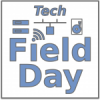
Reading Time: 5 minutesDuring the last Dell Technologies World 2019 event one of the interesting topics was the idea of (real) composable infrastructure. DellEMC already have the Dell EMC PowerEdge MX platform, but at this stage is more like a converged infrastructure 2.0, insteat that a true composable infrastructure. In fact DellEMC define the MX7000 a kinetic infrastructure, but during the event there was an interesting prototype to demostrate that can become a composable infrastructure.











